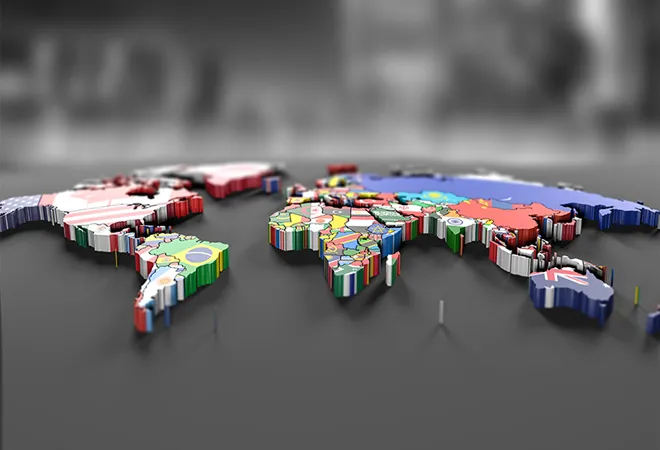
In January 2020, the Ministry of External Affairs (MEA) took the progressive step to establish India’s first, New and Emerging Strategic Technologies (NEST) division. The ministry is yet to reveal the exact structure, function and mandate of the NEST; however, a reply to a parliamentary question details that it will deal with the foreign policy and international legal aspects of new and emerging technologies. It will achieve this objective through exchange of views with foreign governments, and by coordinating with domestic ministries and departments.
The NEST division is a significant development and underscores the importance of emerging technologies to India’s expanding digital landscape and domestic industry. It is also a nod to its increasing relevance to Indian foreign policy objectives, national security and strategic interests. The creation of the new division follows on the footsteps of the ongoing debate on 5G, the next generation of transformational network technology, that has become the flashpoint of an ongoing geopolitical rivalry between the US and China. Given that the choice of a 5G vendor requires a careful analysis of security risks, strategic concerns, economic factors and foreign policy interests, the MEA is more than justified in its need to create a new division to facilitate decision-making in this complex area.
Emerging technologies are generally used to refer to advanced and futuristic technology at a given point in time. While thirty years ago it would have referred to the Internet, today it means artificial intelligence, biotechnology, nanotechnology, 3D printing and quantum computing. These technologies are crucial for giving impetus to innovation, economic progress and social development, and can place early adopters at the head of the pack by leapfrogging traditional barriers to development and ushering in unprecedented technological advancement. The MEA, however, has confined the mandate of the division to emerging “strategic” technologies — a term that will help give direction to the work of the division. While a majority of existing literature discusses “emerging technologies” at length, emerging strategic technologies have only been mentioned in a handful of resources.
These technologies are crucial for giving impetus to innovation, economic progress and social development, and can place early adopters at the head of the pack by leapfrogging traditional barriers to development and ushering in unprecedented technological advancement.
What makes a technology “strategic” can be understood from different perspectives. There is the economic perspective, where the technology’s potential to revolutionise existing processes — such as the use artificial intelligence (AI) in factory automation — makes its early adoption vital for India’s economic interests. Second, the nature, impact and use of different emerging technologies — specifically those that are disruptive or have dual use applications — can expose India to new vulnerabilities and security risks.
Security concerns may be attached to the technology itself, such as health risks connected with biotechnology, or cyber security risks associated with the Internet of Things (IoT), and need to be addressed through a different policy approach. On the other hand, dual use and disruptive technologies — which refers to tech that can enhance military and offensive capability — can also significantly undermine India’s strategic interests. The United Nations Institute for Disarmament Research (UNIDIR) has observed that 3D printing can be used to create weapons, synthetic biology and autonomous weapon systems, and can provide an avenue for rogue states to violate international sanctions, arms control regime and non-proliferation. Such threats can emanate from India’s own neighbourhood, from both state and non-state actors.
Third, India’s decision on choosing a supplier for the technology can have an immense impact on geopolitics, and even recalibrate the existing balance of power. It is well established that power and economic wealth concentrates with those that control new and crucial technologies. Countries that become global tech leaders are further able to consolidate their primacy by dominating manufacture, supply, investments, knowledge sharing, training and capacity building, and norms building in emerging technologies. This, coupled with the asymmetry in technological prowess between countries, means that global tech leaders will naturally become the preferred exporters of emerging technologies while the rest will be importers or consumers. As other countries are keen on swiftly adopting new technologies, they need to carefully avoid entering into an unequal relationship with the exporter, who may be well positioned to bargain and influence the policies of the consumer country. This is being illustrated by the ongoing geopolitical rivalry vis-à-vis the 5G technologies, where Chinese tech, investments and preferential trade terms are often conditioned on the entry of Chinese companies like Huawei.
India’s decision on choosing a supplier for the technology can have an immense impact on geopolitics, and even recalibrate the existing balance of power.
Given these considerations, it will be interesting to see the NEST division use traditional foreign policy tools, such as bilateral and multilateral engagement, participation in international and treaty organizations, policymaking, partnerships and public diplomacy, to achieve its objectives. An illustration can be how a combination of public diplomacy and bilateral and multilateral engagement can help promote the interests of its domestic industries and achieve India’s economic imperatives in acquiring emerging technologies.
The second objective of the division relates to the international legal aspects of new and emerging technologies. This can refer to interpreting the law as it stands, as well as to participate in framing new legal norms to safeguard New Delhi sovereign interests. Prima facie, the attempt to fit emerging technologies within a legal framework may seem both superfluous and counterintuitive. Given their rapidly evolving nature, it is difficult — at any given moment — to capture and anticipate the form of regulation that would be suitable for governing them. What may seem relevant today may quickly become redundant tomorrow. Nevertheless, such processes can still help in formulating customary international law that may become an indispensible part of all developments underpinning futuristic technologies. For instance, though the 1967 Outer Space Treaty is struggling to keep pace with today’s rapid advancement in space technologies, its principles — such as the prohibition on claiming sovereignty over outer space — continues to be adhered to.
This is where the NEST will need to frame its approach towards interpreting international law and also, formulating legal norms for emerging strategic technologies. For instance, a hard law approach, as seen in international trade law, will be binding and comprise of a stronger means to guarantee enforcement and regulation. At the same time, it may not appeal to a majority of countries for fear that regulation can inhibit technological advancement. A soft law approach, like the non-binding Paris Agreement on climate change, will appeal to a larger number of countries; but by virtue of not being legally binding may not do enough in terms of enforcement and implementation. India will, therefore need to ponder on these questions, and determine what would be best aligned with India’s interests and strategic considerations.
It may not appeal to a majority of countries for fear that regulation can inhibit technological advancement.
The NEST can help fill a critical gap in India’s diplomacy and supplement existing institutional structures to focus on emerging technologies, and its relevance to national security and domestic interests. This is similar to the April 2019 decision to consolidate geographical divisions and create a separate Indo-Pacific division under the MEA. This was followed by a larger overhaul in January 2020 to re-organise the portfolios of seven different additional secretaries and empower them to look at culture, trade, development and foreign aid. Evidently, the developments have been part of a larger exercise to enhance coordination within the ministry and adopt broader, thematic approaches towards foreign policy.
Going forward, the NEST division has its work cut out for it. Apart from looking at the form and substance of what the division can do, the initiative can also provide a platform to engage with specialists and trained professionals to frame emerging technology-related policies. This is where the division can be truly experimental; that is, by adopting a cross-sectional approach that not only considers economic, security and technical aspects, but also makes efforts to engage with both public and private stakeholders to frame meaningful policies. When it comes to navigating an uncertain world fraught with geopolitical rivalries and rapidly evolving technologies, the many challenges to India also give it an opportunity to demonstrate its inventiveness towards approaching new foreign policy questions.
The views expressed above belong to the author(s). ORF research and analyses now available on Telegram! Click here to access our curated content — blogs, longforms and interviews.




 PREV
PREV


